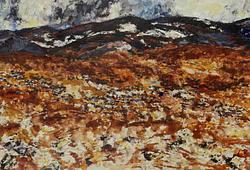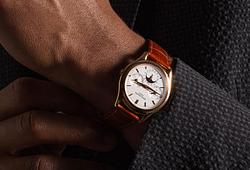Ola Billgren
"Romantiskt landskap (blått)"
Signed Ola Billgren and dated -84 verso. Oil on canvas 80 x 110 cm.
Provenance
Galleri Engström, Stockholm.
Fredrik Roos Collection.
Stockholms Auktionsverk, Fredrik Roos Nordic Collection from Rooseum, 27 September 2006, lot 15.
Private Collection, Sweden.
Literature
Jaana Järretorp and Ulrika Levén (ed.), "Rooseum - Centre for Contemporary Art 1988-98", Malmö, illustrated p. 19.
More information
During his time, Ola Billgren was the Swedish artist who first started exploring the semantic aspect of art. He has been called both a theorist and a sensualist, and in his works he was able to capture the historical and the contemporary in one and the same image. Billgren's paintings are characterised by ambiguity, both in expression and in content, and the dreamlike presence is unmistakable, from the photorealistic works of the 1960s to the romantic approach of late paintings.
In Billgren's paintings from the 1960s and 1970s, inspiration came from contemporary urban life, literature and film, but also from the illustrated press. With his photorealistic paintings, he attracted a great deal of attention and came to represent Sweden at a number of exhibitions. During the 1970s, Billgren gradually broke away from photorealism, and in the 1980s he concentrated his interest on Romanticism and its emotional centre. However, it was always a romanticism within quotation marks that examined and deconstructed the Romantic approach. A central motif was the landscape, but hardly the purely Romantic landscape. Instead, Billgren's landscapes were composed of photographic collages that complicated the experience of the landscape. During the 1980s, Billgren's painting was at its most abstract, but his childhood landscapes in Skåne were still often recognisable. At the end of the century, he often worked with large panoramic paintings where it was not primarily the natural rural landscape, but the urban landscape, that was subjected to his dissecting scrutiny.
In a conversation between Lars Nittve and Douglas Feuk, documented in the book "Album, vol. 1" published in connection with Billgren's retrospective at Rooseum and Moderna Museet in 1991, the relationship between nature/culture and realism/abstraction in Billgren's painting is discussed:
"DF: [...] But also the landscapes from the 80s are often a kind of intimate scenery. Even if the painting does not directly depict - or only depicts a fragment - it can often feel as if the gaze is immersed in a corner of a garden or a grove. And at the same time, perhaps this condensed sensuality gives an equally strong sense of something half-dominated and distant, sometimes even a sense of paradise lost...
LN: Of course, the fragment is also something important. I think that the fragmentary aspect, a kind of collage-like approach to composition, has always been there, even in the very earliest pictures. It's like what's out of the corner of your eye that's visible, the paintings seem somehow centrifugal, they rarely have a composed centre, but they do have a very important periphery, with pieces that almost seem to be about to disappear from the picture. And this is also the case in the romantic landscapes."
Artist
Ola Billgren was born in 1940 in Copenhagen but based his career in Sweden. Billgren was self-taught, having only been trained by his parents Hans and Grete Billgren. Ola worked within the mediums of graphic art, watercolour, collage, photography, film, and scenography. He was also an author and culture critic. Known for his versatility, Billgren cultivated a relationship between art and reality in his work.
During the 1960s, he transitioned from abstract expressionism to photographic realism. Over time, his paintings evolved into a fusion of abstract and photorealistic styles, resulting in romantic landscapes where he examined the interplay of light and color. Forms dissolved, and colors were reduced to monochrome, single-colored surfaces that were richly worked and varied.
In the late 1980s, he returned to urban environments in large cityscapes, often painted from a high perspective but maintaining the impressionistic approach seen in his landscapes. Ola Billgren's influence on recent decades of art has been significant. His work is represented in institutions such as Musée National d'art Moderne Centre George Pompidou in Paris and Moderna Museet in Stockholm.










































